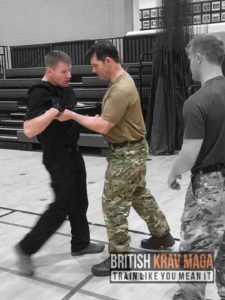Why Group Training in Krav Maga is the Best Choice for Realism and Variety
Krav Maga, is celebrated for its practicality and effectiveness. Whether you’re aiming to enhance your self-defence skills, improve fitness, or build confidence, Krav Maga Leeds offer a comprehensive approach that meets a wide range of goals. When starting your Krav Maga Leeds journey, one of the key decisions you’ll face is whether to train in a group setting or opt for personal training. While both have their merits, group training stands out for its superior realism, variety, and overall training experience. Here’s why group training might be the best choice for you.
The Advantages of Group Training
- Realistic Scenarios with Multiple Partners
One of the most compelling reasons to choose group training is the opportunity to train with a variety of partners. In real-life self-defence situations, you won’t be facing a single opponent who’s matched to your size and strength. Group training exposes you to different body types, fighting styles, and levels of aggression, which better simulates the unpredictability of real-world encounters. This variety helps you learn how to adapt your techniques and respond effectively under pressure, a crucial aspect of Krav Maga’s philosophy.
- Enhanced Realism in Drills
Group classes often include a wide range of drills and scenario-based training that can’t be easily replicated in one-on-one sessions. From multiple attacker scenarios to high-intensity sparring, group training creates a dynamic and realistic environment. Practicing with different partners forces you to think on your feet, make quick decisions, and apply techniques in diverse contexts. This prepares you for the real world in a way that isolated training simply can’t.
- Varied Training Environment
The structure of group classes typically incorporates a mix of drills, sparring, and technique practice. This varied training keeps sessions engaging and ensures that you’re developing a well-rounded skill set. Whether you’re working on striking, grappling, or defence against weapons, the diverse range of activities in a group setting ensures that every aspect of your Krav Maga training is covered.
- Building a Supportive Community
Training in a group offers more than just physical benefits; it also fosters a strong sense of camaraderie and mutual support. The shared experience of learning and progressing together creates bonds that can keep you motivated and accountable. This social aspect is often what keeps practitioners committed over the long term. The encouragement from peers, coupled with the competitive energy of group classes, can push you to work harder and stay consistent.
- Cost-Effective Training
Group classes are generally more affordable than personal training sessions, making them a cost-effective way to train regularly. Krav Maga Leeds offer membership packages that allow you to attend multiple classes per week, providing excellent value for the price. This accessibility means you can train more frequently without breaking the bank, leading to steady improvement over time.
- Learning from Others
In a group setting, you’re not just learning from the instructor but also from your peers. Watching others perform techniques, sparring with partners of different skill levels, and receiving feedback from multiple perspectives can enhance your learning experience. This collective knowledge can help you pick up on nuances and variations in techniques that you might miss in a one-on-one setting.
The Drawbacks of Group Training
While group training offers numerous advantages, it’s also important to consider the potential drawbacks:
- Less Individual Attention
In a group class, the instructor’s attention is divided among multiple students. This means you might not receive immediate or detailed feedback on every technique. However, many instructors make an effort to provide personalized tips and corrections during the class, ensuring that everyone benefits.
- Fixed Schedules
Group classes are typically scheduled at set times, which may not always align with your availability. However, most Krav Maga schools offer classes at various times throughout the week, providing some flexibility in choosing when to train.
- Pacing Challenges
Group classes cater to a wide range of skill levels, which means the pace might not always match your personal needs. If the class is moving too quickly or too slowly for you, it can be challenging. However, the diverse skill levels also offer a learning opportunity, as training with more experienced partners can accelerate your progress, while helping less experienced peers can reinforce your own skills.
The Case for Group Training
Despite the few potential downsides, the benefits of group training in Krav Maga far outweigh them, especially when considering the importance of realism and variety in self-defense training. The opportunity to train with multiple partners in varied drills and scenarios provides an unparalleled level of preparation for real-life situations. The supportive community and cost-effectiveness of group classes make them an attractive option for most practitioners.
In essence, if your goal is to train in a realistic, dynamic, and engaging environment that prepares you for the unpredictable nature of real-world encounters, group training in Krav Maga is the way to go. The variety of partners, the range of drills, and the sense of community all contribute to a superior training experience that will help you develop the skills and confidence needed to defend yourself effectively.
Coach Mike

